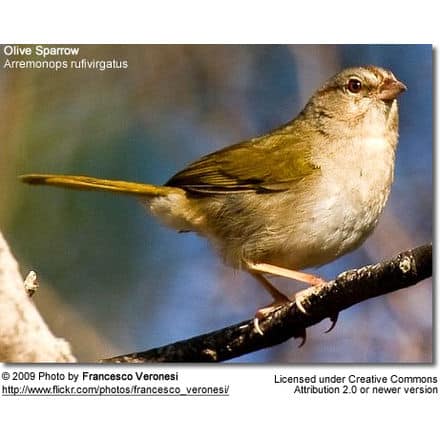Indian Mondaine Pigeons
The Indian Mondaine is a rare breed. In fact, Carl Schoelkopf (the author of below article) states that as of the year 2009, less than 40 of them are currently kept in the Western World.
The Indian Mondaine (Gola)
by Carl Schoelkopf
http://www.racinghomers.com/
Little was known of the Indian Gola before 1900, although the breed was referenced by Fazl, a pigeon fancier, whose words are recorded as early as 1590. A wild field- pigeon of reasonably tame disposition, the Gola was easily domesticated by farmers and field workers in northern and central India.
The thrifty Gola became a valuable and economical addition to each farmstead. During the daylight hours, the flocks would range out gathering grain spilled from the harvest as well as wild seeds. As they returned to their roosting sheds in the evening, the Indian husbandmen would occasionally supply them with heavily salted water to drink.
This would cause the Golas to regurgitate the grain they had gathered. The keepers would gather the spilled, salty grain, wash it in fresh water to remove the salt, and sun-dry it the next day for use by other animals or even for their own use.
Over the centuries of their development, the Golas often varied in size and type due to cross-breeding and mixing of wild pigeons. For unknown reasons, the grizzle factor and tigering pattern became more strongly fixed in this breed than in any other.
J.HW. Morgan, an Englishman employed in the British India Service before 1900, found the Gola to be handsome as well as a prolific breeder. Around that time he imported some of these birds to Britain where he intended to introduce them to the squabbing industry. Despite their medium size, Golas produced a heavy poundage of squabs per year due to rapid and reliable reproduction.
In 1901, W. Edison Kain of New York imported breeding stock from Morgan with the same economic objective. Kain, however, was determined to grow them larger by crossing in various large squabbing breeds already found in America. He used Carneaus, Maltese, Runts, and French Gros Mondaines to increase the squab size and yearly poundage while retaining the desired light skin and continuing the prolific nature of the breed. Some crosses had to be discarded because while the size was often increased, the other qualities were lost.
In the end, Kain produced a strain of black and brown tigering and mottled pigeons which he called the “Indian Mondaine.” The cocks ranged in size from 28 to 30 ounces and the hens from 25 to 28 ounces. They were prolific and their squabs were approximately one pound.
Occasionally duns, reds, and yellows with the same markings were found. In some areas of the United States Swiss Mondaines were crossed in producing an excellent squabbing bird, large in body and good in skin color and disposition. They were mainly white with splash and mottle markings.
Always rare, there are not more than a half dozen breeders of Indian Mondaines in North America, if that. In the 1950s, 60s and 70s, Hans Wetter of Orofino, Idaho, was the primary booster of the breed. Running an ad continuously in the American Pigeon Journal for years, Hans sold a pair or two to curious fanciers and sometimes squab breeders would buy start-up stock, but the Indian never really became a major breed in the industry.
Eventually, as Han Wetter had to give up the fancy, Bob Sutherland of Everett, Washington, bought out his stud of Indian Mondaines. Today Bob continues to have the best stock of Indian Mondaines of the standard established by Kain and later. Andrews of Los Angeles was also a dedicated breeder of Indian Mondaines for many years. His Indians were heavy in Swiss Mondaine blood and are a whiter pigeon. A few of his birds can still be found in that area.
Sutherland’s Indians are a bit smaller than the Andrews type. They resemble the original Gola in color and marking. They are often strikingly tigered, a beautiful bird to watch. It appears to be difficult for the Indian Mondaine to hold its size as a squabbing breed. Without outcrosses to other large breeds, they seem to return to the size of the parent Indian Gola.
According to Willard Hollander, the geneticist, the grizzle factor in the Indian Gola is a very old and well-established characteristic. Over time it seems to win out in all of the crosses. Fanciers have used the Gola to introduce the grizzle factor into pigeon breeds where it was not formerly known.
Gentle and pleasant to look at, the Indian Mondaine is an easy keeper and an energetic flyer. It is a very hardy bird, but like so many of our rare breeds it is on the edge of extinction.
If you plan to be in pigeons all of your life and have facilities for larger breeds, you may want to consider keeping a pair or two of Indian Mondaines. They will not disappoint you.
Carl Schoelkopf, North Road Loft, Redding, California…Rare Breeds Pigeon Club
Indian Mondaine Pigeon Lofts:
- North Road Loft, Carl Schoelkopf(California)
- Contact:
- [email protected] – Tel. (530) 243-8816
- Contact:
- Bob Sutherland, Marysville, Marysville, WA
- Breeds: Washington Dragoon, Shakhsharli, Indian Mondaine, Syrian Turbiteen, Dewlap
- Contact: 360-654-1786
Personality and Pet Potential, as well as Pigeon Forums and Rescue Organizations
(Columbidae – Please see also Doves)
Pigeon Information … Pigeon Intelligence and Amazing Facts …Species / Breeds … Breed Photo Gallery



